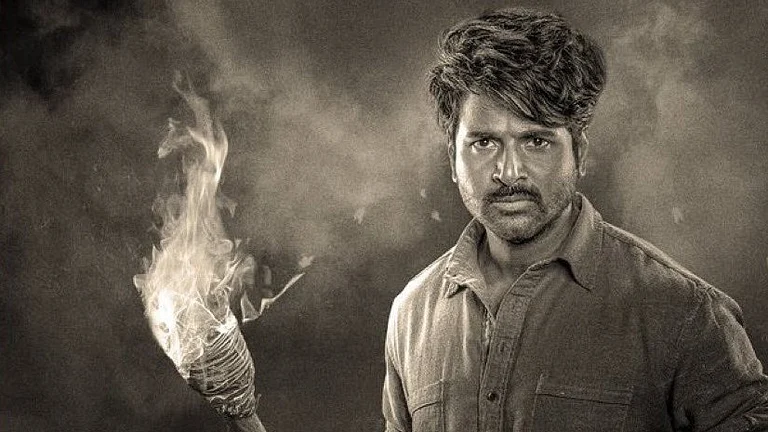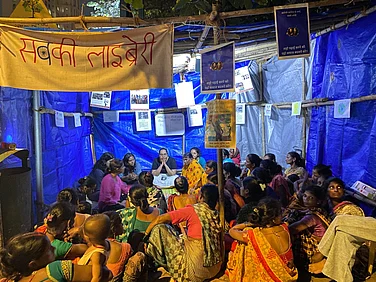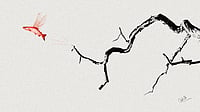Madhopur Ka Ghar by Tripurari Sharan is an intensely imagined personal novel and deeply poignant tale of vicissitudes of a family in Bihar. Further, this is a novel about the idea of a man struggling to come to term with idiosyncrasies of his life. And ultimately, this is a novel that surprises us with pure, unadulterated quirks of fate and ironies of Indian village life.
Madhopur Ka Ghar is epic in its scope and vision as the saga straddles three generations of a family alongside the tumultuous events of history like ravages of permanent settlement, earthquake of 1934, famine in 1967, national emergency of 1975, stirrings of socialist movement to disintegration of traditional order and the struggle over the spoils of social change in Bihar. In short, Madhopur Ka Ghar is a daringly introspective novel, a work of startling originality and beauty, and reliable and relatable like Rahi Masoom Raza’s classic novel Aadha Gaon.
Written with an elegiac intensity of allegorical language and asymmetric sensuous wit like Maila Aanchal of Phanishwar Nath Renu, Tripurari Sharan, known as TRIPS in his elite IAS and literary fraternity, dazzles in crafting a celluloid time-travel moving back and forth through folds of family history and individual eccentricities. Using the techniques of autofiction and coming-of-age memoir like French novelist Annie Ernaux, Madhopur Ka Ghar is a metonymic novel shuffling between inner recesses of history of the region and fluctuating fortunes of an impoverished feudal family and self-absorbed individuals.
The novel revolves around Sharma ji alias Baba, the patriarch of the family, his wife, and sons Hemang, Umang, Veenu, Teepu, and Lora, the eponymous Labrador dog like Homer’s loyal hound Argos, and the narrator of the novel. Blurring the worlds of humans and animals through his mother’s diary and Lora’s poignant memories, Tripurari Sharan maintains the truthfulness of fiction as an art and also an experience. In his debut novel, Tripurari Sharan is living memory of Baba — Sharma ji, his father, his village, and his people in the face of transformational historic and generational forces of change in the country.
These days when sociologists regrettably lament that Indian village has failed to excite as a sociological reality, Madhopur Ka Ghar in Bihar becomes an uncanny trope of repressed selves of village India that is strangely cathartic and simultaneously redemptive. Savour the experience of Baba’s fancy Apollo Boring House in Madhopur — the techno-cultural symbol of unfolding of green revolution in India. Ironically, boring pump in Madhopur was inaugurated the day Apollo 11 reached the Moon. And when it comes to revealing closely-guarded family secrets, or tales of girls breaching social conventions, Madhopur Ka Ghar is delightfully irreverential.
Colloquial and provincial like Rag Darbari of Srilal Shukla, the novel revels in giving light to minutiae of interpersonal tensions in family life and injustices of patriarchy in village India. Though Baba is the central character, there are multitude of full-voiced and mirthful characters, notoriously primordial and retro-packaged modern at the same time. Some characters like Doctor Saheb —father of Baba— or Zahur Mian, the migrant Muslim caretaker, are neither eminent nor ordinary yet they stay with us as the most unforgettable people.
There is no dramatic climax here, only slow epiphany with premonitory ebbs and flows of the future of a family, a village, and a nation that casts a spell you can’t resist. Bihar has resurrected itself beyond recognition. Baba has passed away and Dora also died in the village house lonely. Granny (Dadi) spends her time with her youngest son Teepu. And Teepu has resigned from the IAS to become director of a prestigious art institution. People say he is planning to write a novel.
After I finished the novel, I was struck with wide-eyed wonder because fictional Madhopur Ka Ghar is a celebration of village life in its entirety, illuminating the way fiction itself becomes a home, life here and hereafter (Zindagi yahan aur wahan). That’s why Madhopur Ka Ghar shows why migrants walked back home in village India during the pandemic. There is nothing more desperately safe and despairingly comfortable place than ghar — home. No wonder, Madhopur Ka Ghar travels everywhere.
I am sure when you are done with the novel, you will be tempted to do a duet with Zahur Mian singing Mohamad Rafi’s iconic song from Mela film — Ye zindagi ke mele, ye zindagi ke mele/Duniya mein kam na honge/Afasos, hum naa honge. (Carnival of this life/ Carnival of this life/The world will never fall short of this /Alas, we will not be there) Thus, life in Madhopur Ka Ghar goes on forever, even if you are not there!
(Ashwani Kumar is a poet, writer, and professor at Tata Institute of Social Sciences. Recently, he has published Rivers Going Home, a major anthology of Indian poetry.)

























